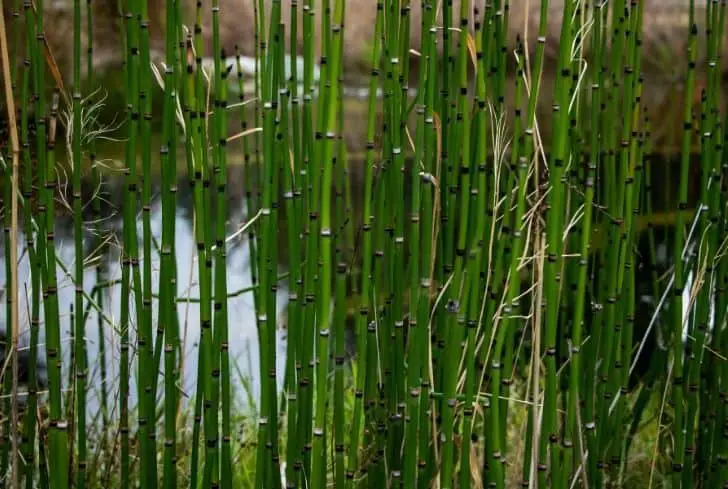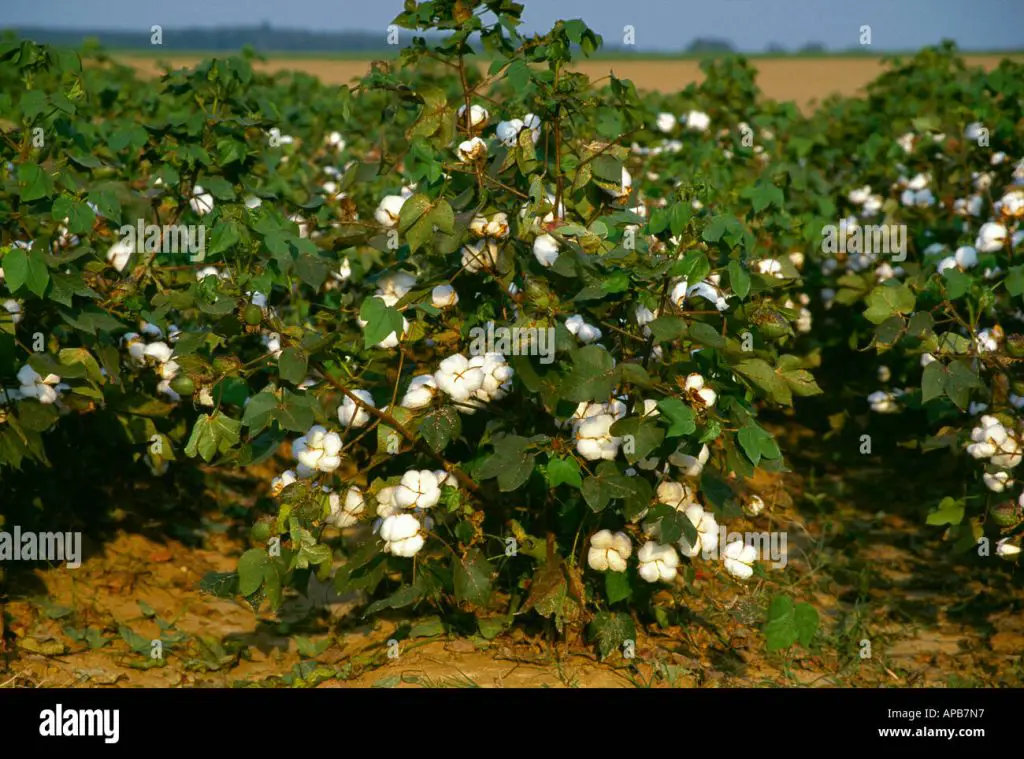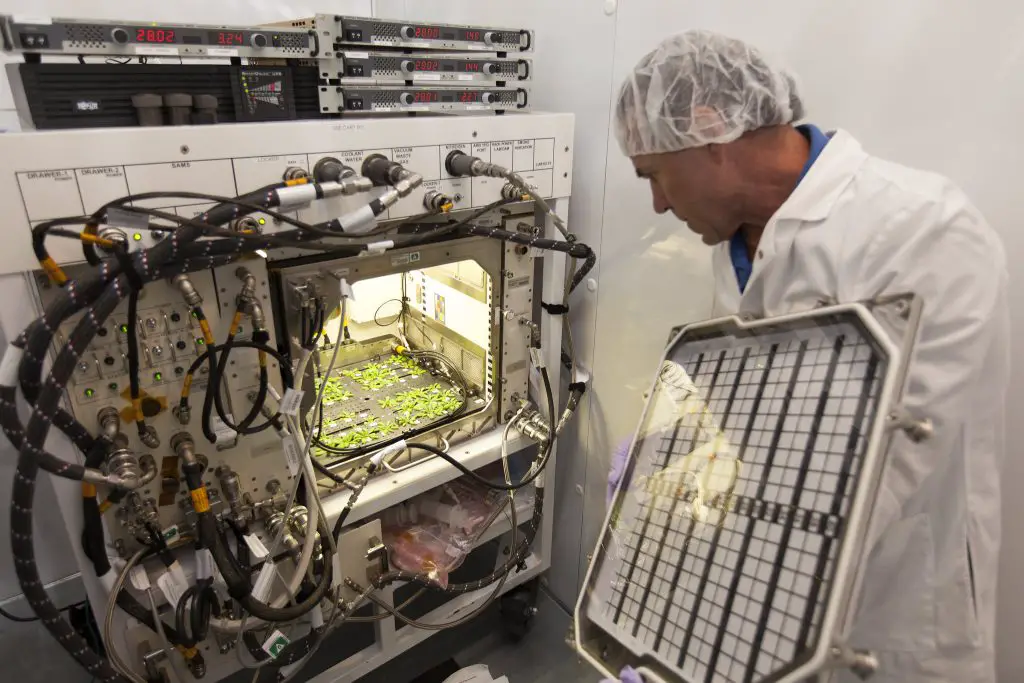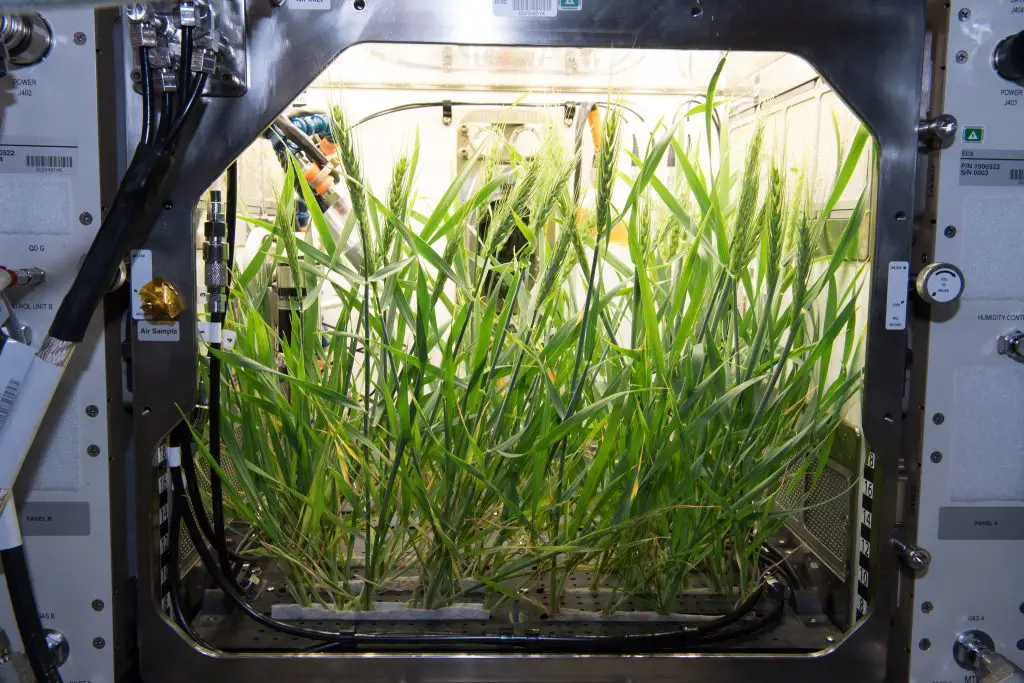Plants that grow in bodies of water include water lilies, cattails, and duckweed. These plants have adapted to thrive in aquatic environments.
They play a crucial role in maintaining water quality and providing habitat for various species. Additionally, they contribute to the overall aesthetics of ponds, lakes, and other water bodies. Whether it’s the vibrant blooms of water lilies or the dense foliage of cattails, these plants enhance the natural beauty of aquatic ecosystems.
Furthermore, they perform important functions such as oxygenating the water, stabilizing the banks, and filtering pollutants. So, next time you come across a body of water, take a moment to appreciate the diverse and vital plants that call it home.
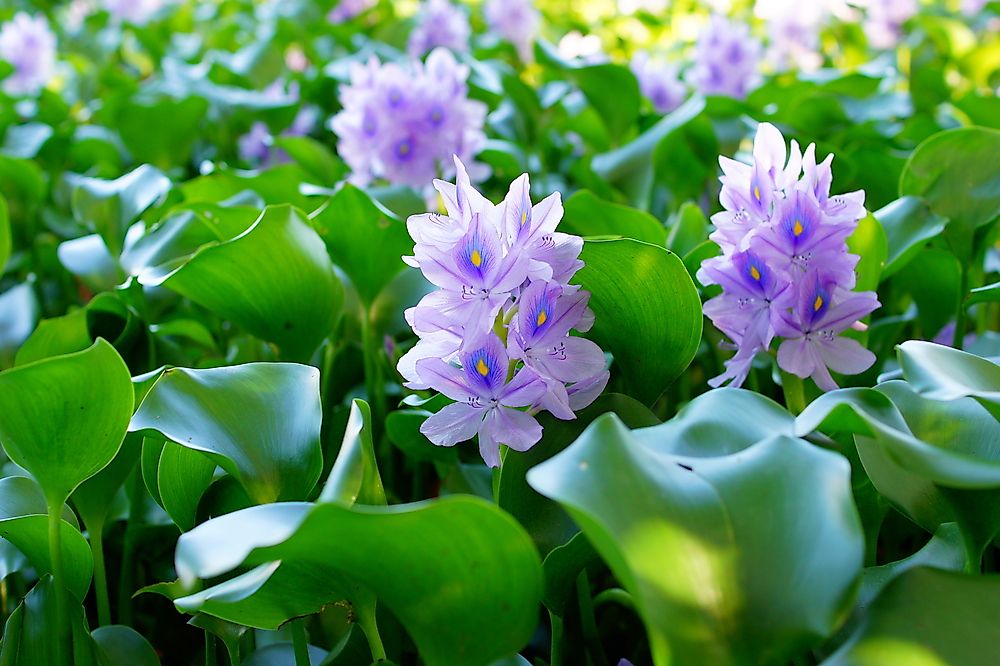
Credit: www.worldatlas.com
Types Of Aquatic Plants
Plants that grow in bodies of water are not only fascinating but also play a crucial role in maintaining a healthy aquatic ecosystem. These plants have adapted to thrive in water and offer numerous benefits, from oxygenating the water to providing shelter for aquatic organisms.
In this section, we will explore the different types of aquatic plants that you can find in bodies of water.
Emergent Plants
Emergent plants are those that have their roots submerged in water but have leaves, stems, or flowers that extend above the surface. These plants are typically found in shallow water or along the edges of lakes, ponds, and marshes. They serve as a vital link between the aquatic and terrestrial ecosystems.
- Definition and characteristics:
- Emergent plants are rooted in the bottom sediment and grow upward, emerging above the water surface.
- Their stems are often stiff and erect, allowing them to withstand water currents and waves.
- These plants have adaptations such as hollow stems, waxy leaves, and stomata on the upper surface to minimize water loss.
- Examples of emergent plants:
- Cattails: These iconic plants are easily recognizable with their cylindrical flower spikes and long, flat leaves. They provide food and habitat for various birds and animals.
- Bullrushes: Bullrushes, also known as reedmace or cat-tail, feature distinctive dark brown cylindrical flower heads that resemble sausages. They thrive in wetlands and play a crucial role in stabilizing the shoreline.
Submerged Plants
Submerged plants are fully immersed in water, with their roots, stems, and leaves all underwater. These plants extract nutrients directly from the water column and are essential for maintaining water clarity and quality.
- Definition and characteristics:
- Submerged plants do not have a floating structure and are entirely dependent on the water for support.
- They have thin, flexible leaves that can be either ribbon-like or feathery, designed to absorb dissolved oxygen.
- These plants have root systems that anchor them to the bottom substrate but do not absorb nutrients from the soil.
- Examples of submerged plants:
- Eelgrass: Eelgrass forms extensive underwater meadows and provides shelter for numerous fish and invertebrates. It is a crucial habitat for many marine species.
- Waterweed: This fast-growing plant is characterized by its long, slender stems and branching leaves. It helps oxygenate the water and provides hiding spots for small aquatic organisms.
Floating Plants
Floating plants are those that remain on the water’s surface, with their roots dangling freely or anchored in the substrate. These plants are highly adapted to life on the water’s surface and can have various shapes and sizes.
- Definition and characteristics:
- Floating plants have leaves that float on the water’s surface, enabling efficient light absorption.
- They often have air-filled chambers that help with buoyancy, allowing them to float.
- These plants reproduce through floating seeds or vegetative propagation.
- Examples of floating plants:
- Water lilies: Water lilies are cherished for their beautiful floating flowers and wide, round leaves. They provide shade to aquatic organisms and help sustain the health of the pond ecosystem.
- Duckweed: Duckweed is a small, free-floating plant that forms a green carpet on the water’s surface. It multiplies rapidly and serves as a food source for ducks and other waterfowl.
These different types of aquatic plants each contribute to the overall health and balance of bodies of water, providing numerous ecological benefits. Understanding their characteristics and role in the ecosystem helps us appreciate the intricate web of life that exists beneath the water’s surface.
Adaptations For Life In Water
Aquatic plants have evolved fascinating adaptations to thrive in bodies of water. These adaptations can be categorized into three main types: structural, physiological, and reproductive. Let’s explore each category and some examples of how these adaptations enable plants to survive and thrive in aquatic environments.
Structural Adaptations
Aquatic plants possess unique structural adaptations that allow them to live in water. These adaptations include:
- Soft and flexible stems: Aquatic plants have stems that are soft and flexible, enabling them to withstand the movement of water without breaking.
- Air-filled spaces: Many aquatic plants have air-filled spaces in their tissues that help them float on the water’s surface, allowing their leaves to bask in sunlight for photosynthesis.
- Long and narrow leaves: To minimize water resistance and prevent damage from strong currents, aquatic plants often sport long and narrow leaves. These allow for efficient water flow and reduce the risk of tearing.
Examples of structural adaptations in aquatic plants:
- Water lilies (nymphaea): These plants have broad, round leaves that float on the water’s surface, with air-filled spaces in their tissues to aid in buoyancy.
- Eelgrass (zostera marina): Eelgrass has long, ribbon-like leaves that wave in the water, providing ample surface area for photosynthesis while minimizing water resistance.
Physiological Adaptations
In addition to their structural adaptations, aquatic plants also possess physiological adaptations that help them survive in water. These adaptations include:
- High water absorption: Aquatic plants have specialized root systems that can absorb water efficiently from their watery surroundings. This ability allows them to take in essential nutrients and minerals dissolved in the water.
- Chlorophyll adaptation: Some aquatic plants have adapted to low-light environments by producing different types of chlorophyll. This enables them to effectively capture and utilize light energy for photosynthesis, even in murky waters.
- Oxygen transport: Since oxygen availability can be limited in water, aquatic plants have developed adaptations to efficiently transport oxygen throughout their tissues.
Examples of physiological adaptations in aquatic plants:
- Water hyacinth (eichhornia crassipes): Water hyacinth has highly efficient root systems that absorb water and nutrients, allowing it to thrive in diverse aquatic habitats.
- Vallisneria spiralis: This submerged aquatic plant has adapted by producing chlorophyll that can absorb light effectively even in turbid waters.
Reproductive Adaptations
Aquatic plants have unique reproductive adaptations that allow them to reproduce in aquatic environments. These adaptations include:
- Hydrophilous pollination: Aquatic plants rely on water to transfer pollen from the male reproductive structures to the female ones. This adaptation ensures successful reproduction despite the challenges of living in water.
- Lightweight seeds: To enhance their dispersal, many aquatic plants produce lightweight seeds that can float on the water’s surface and be carried away by currents to new locations.
- Vegetative reproduction: Some aquatic plants can reproduce asexually through the production of plantlets or runners. This method enables the plants to quickly colonize new areas and form dense populations.
Examples of reproductive adaptations in aquatic plants:
- Waterweed (elodea canadensis): Waterweed uses hydrophilous pollination, with its male flowers releasing pollen directly into the water currents for transportation to the female flowers.
- Duckweed (lemna minor): Duckweed produces small, lightweight seeds that can be dispersed by wind or water, allowing it to colonize new areas efficiently.
Through their structural, physiological, and reproductive adaptations, aquatic plants have conquered the challenges of living in bodies of water. These unique features equip them with the necessary tools to survive and thrive in their underwater habitats.
Importance Of Aquatic Plants
Aquatic plants play a crucial role in bodies of water, providing numerous benefits that contribute to the overall health and balance of the ecosystem. From supporting the delicate web of life to enhancing the aesthetic appeal of ponds and lakes, these plants are essential for the well-being of both aquatic organisms and the environment.
Let’s explore the various aspects of their importance:
Ecosystem Support
- Aquatic plants offer shelter and food sources for a variety of organisms, such as fish, amphibians, and invertebrates.
- They create complex habitats that provide protection for small organisms from predators.
- These plants promote biodiversity by providing niches for different species to thrive.
Role In Oxygen Production
- Through the process of photosynthesis, aquatic plants release oxygen into the water, replenishing the dissolved oxygen levels.
- Adequate oxygen levels are crucial for the survival of fish and other aquatic organisms.
Water Filtration And Nutrient Cycling
- Aquatic plants act as natural filters, reducing sediment and trapping pollutants present in the water.
- They take up excess nutrients, such as nitrogen and phosphorus, which helps prevent eutrophication and algal blooms.
- The plants play a vital role in cycling nutrients, returning them back to the water once they decompose.
Habitats For Aquatic Organisms
- By creating submerged and emergent vegetation, aquatic plants provide essential habitats for various aquatic organisms.
- These habitats offer protection, breeding grounds, and sources of food, contributing to the overall richness of aquatic life.
Aesthetic Value
- The presence of aquatic plants adds beauty and tranquility to bodies of water, enhancing the overall aesthetics.
- Their vibrant colors, graceful movements, and reflections on the water surface create a visually pleasing environment.
Use In Landscaping And Water Gardening
- Aquatic plants are popular choices for landscaping and water gardening projects.
- They can be incorporated into ponds, water features, or artificial wetlands to create beautiful and sustainable aquatic ecosystems.
- These plants not only enhance the visual appeal but also contribute to the ecological balance.
Aquatic plants are vital components of bodies of water, supporting ecosystems, contributing to oxygen production, filtering water, providing habitats, and adding aesthetic value to ponds and lakes. With their numerous benefits, these plants play a pivotal role in maintaining the health and biodiversity of aquatic environments.
Threats And Conservation
Plants That Grow In Bodies Of Water: Threats And Conservation
Plants that grow in bodies of water, such as lakes, rivers, and ponds, provide essential habitats for various wildlife and play a crucial role in maintaining the ecological balance. However, the presence of invasive aquatic plants poses significant threats to these delicate ecosystems.
In this section, we will explore the impact of invasive species on native plants and ecosystems, as well as the ongoing efforts and strategies for their conservation.
Invasive Aquatic Plants:
Invasive aquatic plants are non-native species that outcompete and displace native plants, often leading to a decline in biodiversity. These plants possess aggressive growth characteristics, allowing them to quickly establish themselves and dominate the ecosystems they invade.
Examples of invasive species:
- Water hyacinth: With its beautiful lavender flowers, water hyacinth may seem harmless, but it can rapidly spread, covering the entire surface of a body of water, blocking sunlight and depleting oxygen levels.
- Eurasian watermilfoil: This invasive plant forms dense mats, choking out native vegetation and impeding the movement of fish and other aquatic organisms.
- Purple loosestrife: Known for its vibrant purple flowers, purple loosestrife aggressively invades wetlands, altering the hydrology and displacing native species.
Impact on native plants and ecosystems:
- Reduced biodiversity: Invasive plants can outcompete native species, leading to decreased plant diversity and, subsequently, impacting wildlife that rely on these plants for food and shelter.
- Altered habitats: The dense growth of invasive plants can alter the structure and dynamics of aquatic ecosystems, affecting water flow, oxygen levels, nutrient cycling, and overall habitat quality.
Conservation efforts:
To combat the threats posed by invasive aquatic plants and protect native species and ecosystems, various conservation efforts are being undertaken:
- Early detection and monitoring: Regular surveillance and early identification of invasive species help prevent their establishment and spread.
- Mechanical removal: Physical removal methods such as hand-pulling, cutting, and dredging can help control the spread of invasive plants in smaller water bodies.
- Biological control: Introduction of natural enemies, such as herbivorous insects or fish species, can be an effective strategy to reduce the population of invasive plants.
- Herbicide application: In specific cases, carefully targeted herbicide use can help manage and control the spread of invasive species.
Conservation of endangered aquatic plants:
While invasive species pose significant challenges, the conservation of endangered aquatic plants is equally crucial. Efforts to conserve these vulnerable species include:
- Habitat restoration: Restoring degraded aquatic habitats is critical for the survival of endangered plant species, involving activities like wetland creation, water quality improvement, and hydrological management.
- Education and awareness: Raising public awareness about the importance of endangered aquatic plants and their habitats can help garner support and encourage conservation actions.
The presence of invasive aquatic plants poses a major threat to the delicate balance of ecosystems in bodies of water. By implementing management strategies for invasive plants and conservation efforts for endangered species, we can work towards preserving the biodiversity and health of these valuable aquatic habitats.
Frequently Asked Questions For Plants That Grow In Bodies Of Water
What Are Some Examples Of Aquatic Plants?
Aquatic plants include water lilies, water hyacinths, duckweeds, lotus, and cattails. These plants have adapted to live either partially or fully submerged in bodies of water.
How Do Plants Survive In Water?
Plants that grow in bodies of water have special adaptations to survive. They have air-filled spaces in their stems or leaves that help them float, and specialized root systems to access nutrients in the water.
Can Plants Grow In Saltwater Bodies?
Yes, certain plants can tolerate or even thrive in saltwater environments. Examples include mangroves, seagrasses, and salt marsh plants. These plants have evolved to handle the high salt concentrations found in coastal areas.
What Is The Importance Of Aquatic Plants?
Aquatic plants play a crucial role in maintaining the health of bodies of water. They provide oxygen, filter pollutants, prevent erosion, serve as habitats for aquatic creatures, and contribute to the overall ecosystem balance.
How Can I Grow Aquatic Plants In My Backyard Pond?
To grow aquatic plants in a backyard pond, you will need to create a suitable environment. This includes ensuring the correct water depth, using appropriate planting containers, providing enough sunlight, and monitoring water quality regularly.
Can I Use Aquatic Plants In My Aquarium?
Yes, many aquatic plants are suitable for use in aquariums. These plants not only add beauty to the aquarium but also provide oxygen and help maintain water quality. However, it is important to choose plants that are compatible with your aquarium’s conditions.
Conclusion
Plants that grow in bodies of water play a vital role in maintaining the balance of aquatic ecosystems. These plants provide food and shelter for various organisms, contribute to water purification, and help prevent erosion and flooding. The abundance and diversity of these water-loving plants can also enhance the aesthetic appeal of lakes, ponds, and rivers.
From the beautiful lotus flowers to the adaptable cattails, these plants have evolved unique adaptations that enable them to thrive in aquatic environments. It is fascinating to witness the resilience and adaptability of these plants as they overcome challenges posed by constant submersion and fluctuating water levels.
As we continue to explore and appreciate the wonders of the natural world, let us not forget the important role that plants in bodies of water play in sustaining life and maintaining the health of our planet’s water bodies. So next time you find yourself near a body of water, take a moment to observe and appreciate the amazing plants that call it home.
